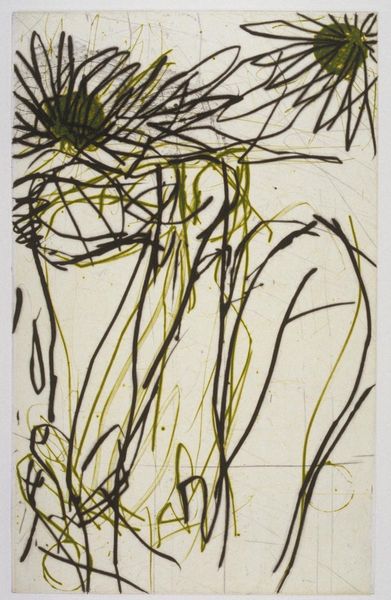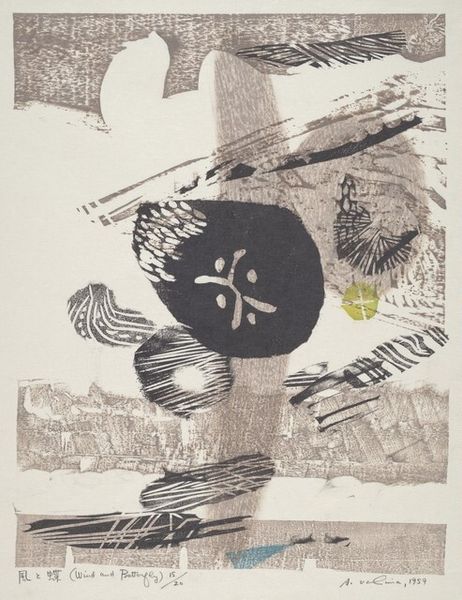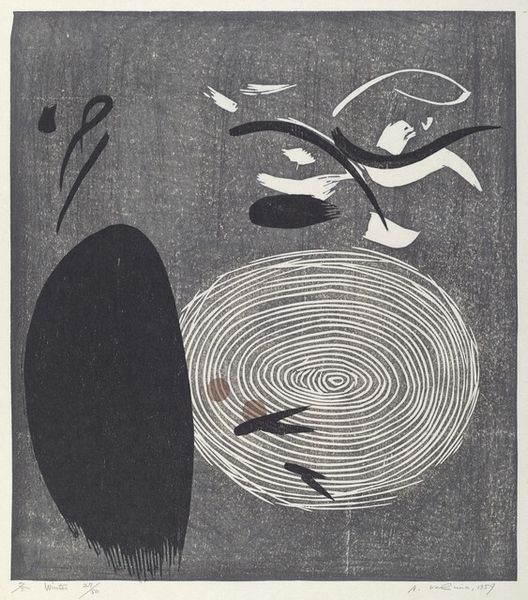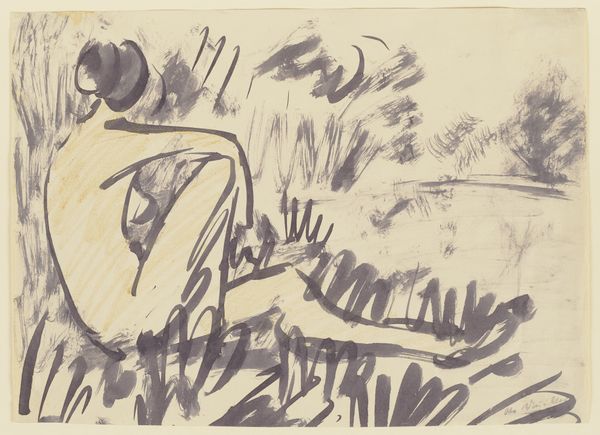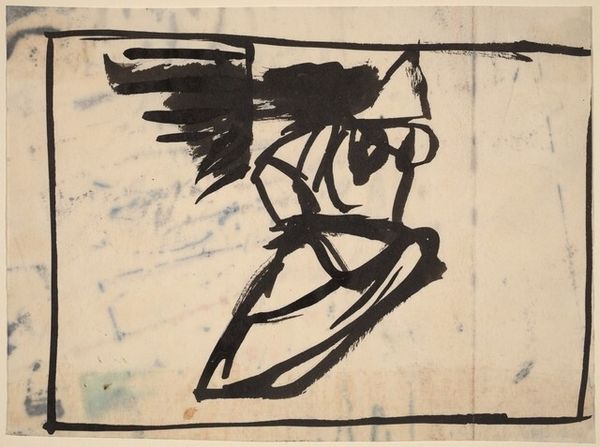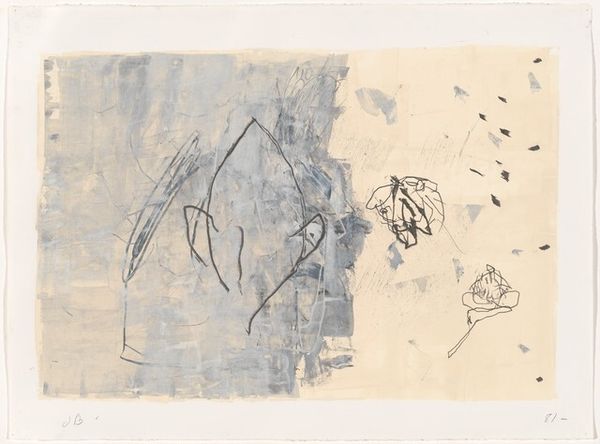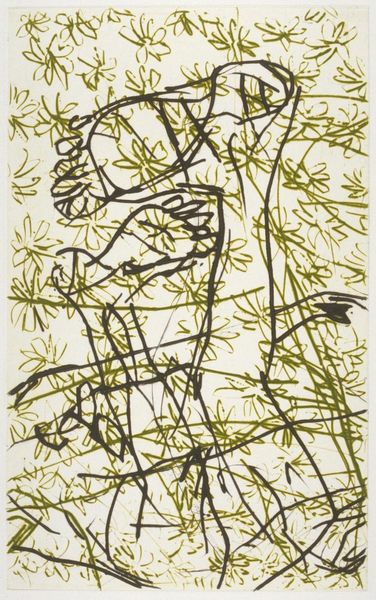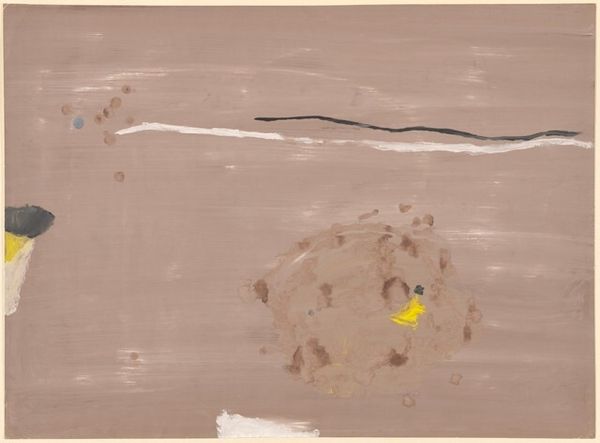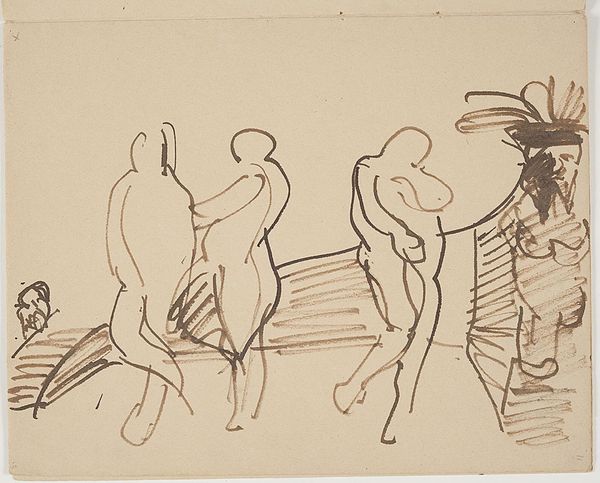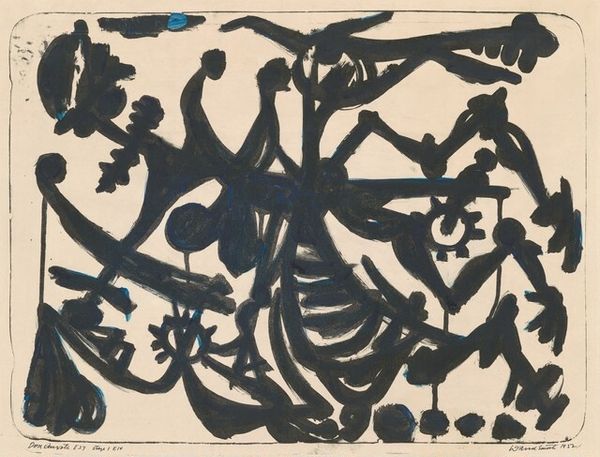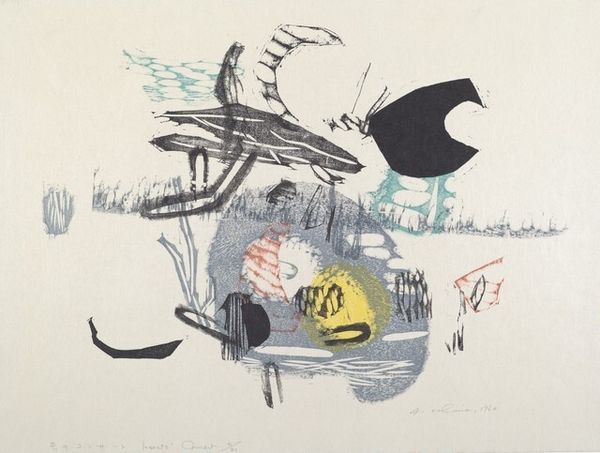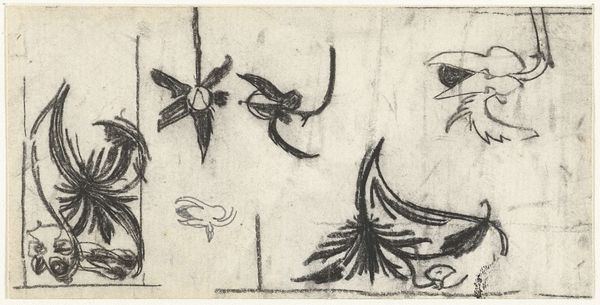
drawing, lithograph, print, graphite
#
abstract-expressionism
#
drawing
#
lithograph
# print
#
geometric
#
naive art
#
abstraction
#
graphite
Copyright: National Gallery of Art: CC0 1.0
Curator: Here we have Ansei Uchima’s 1959 lithograph entitled "Song of the Earth," featuring an array of striking abstract and geometric shapes. Editor: Well, that’s quite evocative. I’m immediately drawn to the interplay of the dark, almost skeletal branches against the softer, textured background. It feels primal, like witnessing nature's resilience. Curator: Uchima was deeply influenced by the Abstract Expressionist movement. Examining his oeuvre, we can trace the influence of his early years spent training in arts in an academic and conservative setting. Editor: That contextual framework provides helpful insight to decode the cultural baggage behind it. It feels Japanese, a quiet energy with complex lines carrying ancestral memory and spiritual connections to land. Does the title perhaps relate to that connection? Curator: Indeed. The imagery invokes universal themes of regeneration and decay that speaks to both American and Japanese art. Uchima was also interested in how his art may convey personal themes of migration to broader public audiences. Editor: The brown of the lithographic stone creates a muted backdrop that speaks to the humble materials in it, perhaps relating the drawing back to basic artistic principles: a direct song. Curator: I find your perspective truly revealing. In his body of work, Uchima's abstraction allowed him to represent something intrinsically Okinawan, rather than producing easily digestible landscapes. The formal complexity then relates to social factors. Editor: And doesn’t it resonate even now? The idea of nature's song, its capacity to both destroy and create, rendered in the language of stark lines and gentle shading…it speaks volumes to our current moment, its cycles of history. Curator: It certainly does offer much food for thought, doesn't it? Seeing how personal, historical, and the social dimensions may come together. Editor: Absolutely. It makes one ponder on the deeper symbolic resonance of land, how artists grapple with representing their homeland through images over time.
Comments
No comments
Be the first to comment and join the conversation on the ultimate creative platform.
